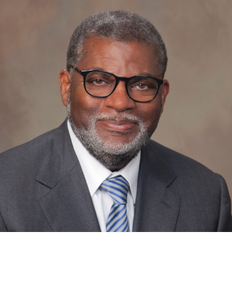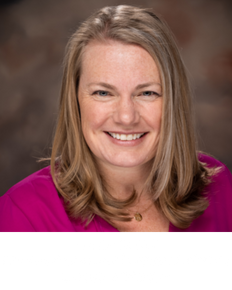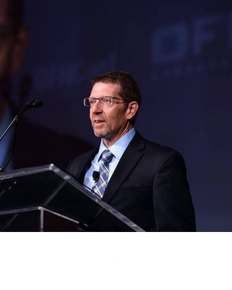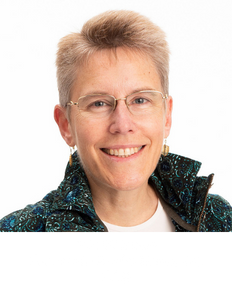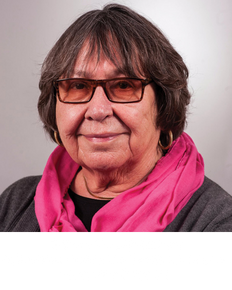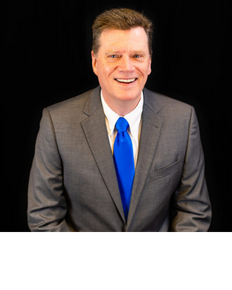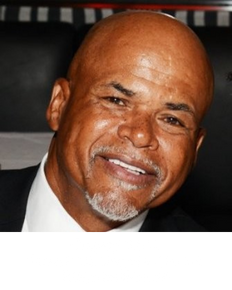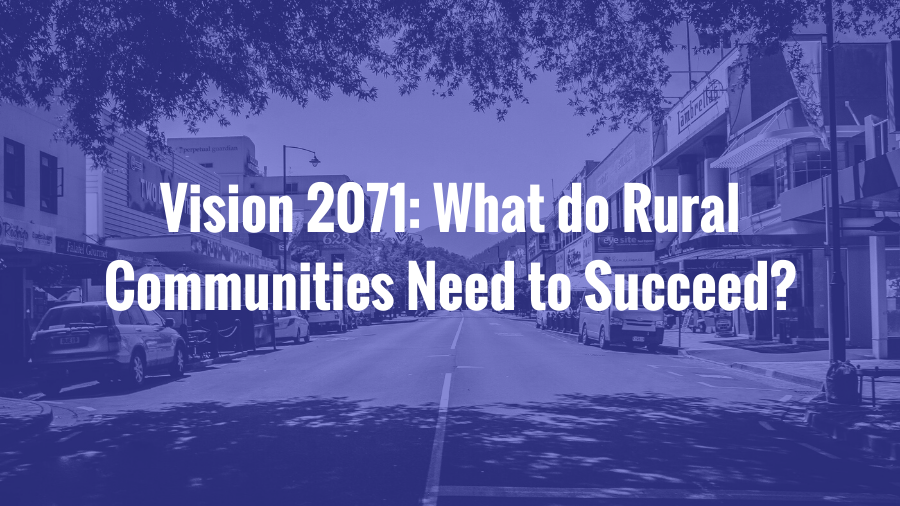
Vision 2071: What do Rural Communities Need to Succeed?
The year 2071 is far away, but the work of building the future of rural communities is already underway. Across the diverse tapestry of rural America, dedicated housing professionals hold an equally diverse set of visions for their communities. Uniting them all is the desire to solve the most pressing challenges facing rural Americans.
Every day, housers build the future they want to live in. The Housing Assistance Council (HAC) is dedicated to helping them succeed. For the last 50 years, HAC has helped build homes and communities across rural America. Through the Vision 2071 campaign, we look towards the next 50 years.
We asked eight housing and community development leaders to share their vision for their communities and what they need to turn that vision into a reality. If we want rural communities to thrive over the long term, we must establish dedicated funding, build capacity, and muster political will. Together, we can help Rural America thrive for the next 50 years and beyond. It all starts by understanding what we need to achieve that goal.
Leaders
Challenges
Solving our communities’ challenges begins with identifying the problems. While the obstacles faced by rural communities are as varied as the communities themselves, many share common themes. If rural communities are to thrive over the next 50 years, we need to overcome the challenges of housing affordability, unfulfilled community needs, and gaps of access.
Housing Affordability
The lack of affordable housing not only threatens rural Americans’ quality of life; it is a barrier to achieving the visions of thriving rural communities over the next 50 years. More than 6 million rural Americans are housing cost burdened, spending more than 30% of their income on housing. Emilee Powell, Executive Director of Housing Resources of Western Colorado (HRWC), explained that increased demand for vacation homes in her community has priced out locals, widening the housing gap. The challenge, as she describes it, is that there’s not enough money available to invest in all the community’s housing needs. While HRWC can chip away at this by working on growing the economy more broadly, gradual solutions don’t always work because the “problem just changes.”
To illustrate the difficulty in preserving and expanding the stock of affordable homes, Gregory Hyson pointed to his organization’s work with Amaryllis Gardens, an affordable farmworker housing community in Pahokee, Florida. When Diverse Housing Services bought the 30-year-old multifamily community, it had already weathered two hurricanes and faced extensive need for long-term improvements. But, with “limited resources” and “rents that couldn’t keep up with the expenses,” it was difficult to meet the community’s needs. Housing affordability—from rising prices to gentrification to preservation of existing affordable housing—poses a serious challenge to community members and the organizations that serve them.
In California’s San Joaquin Valley, the problem is acute. The rising price of housing has made it harder for low-income families to meet their needs for shelter, let alone build wealth through homeownership, explains Tom Collishaw, President and CEO of Self-Help Enterprises. Confounding the problem is gentrification, which he notes is displacing residents. With 70% of renters paying more than half of their income on housing, housing affordability in California is at a crisis point at which many rural communities may soon find themselves. “We are at the leading edge of this,” he warns.
Affordable homes aren’t just essential for making shelter accessible. Since housing is most people’s largest expense, the mismatch between housing costs and incomes can wreak havoc. Our communities need affordable places to call home if they’re going to thrive in the next half century. Unfortunately, the crisis in housing affordability will only worsen over the next 50 years if it’s left unaddressed.
Unfulfilled Community Needs
Poor infrastructure and a lack of basic community services pose a key challenge to achieving a thriving future for rural communities. While the specific infrastructure problems vary, several leaders cite roads, sewers, and drinking water as acute problems.
Despite stretching across more than 3,400 square miles, the Pine Ridge Indian Reservation has few paved roads, explains Pinky Clifford, Executive Director of the Oglala Sioux Tribe Partnership for Housing. Plus, the reservation is a food desert, making it burdensome for families to put food on the table. With few homes and persistent housing quality problems, the reservation can’t fully meet the housing needs of its residents with the housing stock available.
Ashleigh Winans, CEO of NeighborWorks Southern Colorado, frames the problem more broadly as one of unmet basic needs. Ironically, her community is a major agricultural producer that doesn’t have enough grocers to meet its own food needs. To compound the problem, many remote communities in southern Colorado are hundreds of miles apart from each other and from the organizations whose services they rely on.
Ines Polonius, CEO of Communities Unlimited, adds that many rural communities she works with lack skilled tradespeople to perform vital functions. Plumbers, electricians, and home inspectors are all needed to keep homes safe and to construct new ones, so without their services, communities struggle. “Who is building those skills?” she asked, pointing out the lack of training. A thriving future for rural communities can’t be built without skilled tradespeople to do the building. Meeting the basic needs of communities is the foundation of their future.
Gaps of Access
It should be no surprise that rural challenges are felt unequally between communities and within them. Across the country, inequity—on the bases of race, geography, and income—stands as a barrier to fulfilling our visions for Rural America. Jim King, President and CEO of Fahe, describes the underinvestment in Appalachia, Indian Country, and the Mississippi Delta as a problem crying out for a solution. Appalachia faces challenges with housing, sanitation, and drinking water at a far higher rate than most, but King is clear that the region is ready to work with public leaders and private investors to bring America fully into the 21st century.
Bill Bynum, CEO of Hope Credit Union (HOPE), describes the Deep South in similar terms. To him, the work of HOPE is to “run to the fire and try to put it out” by addressing the severe, entrenched gaps that leave some communities and some community members in poverty while others flourish. As HOPE works on “closing the gaps” so all community members can achieve a quality standard of living, they must also engage in advocacy to address the causes of that inequity, Bynum explained. Gaps in housing, access to financial capital, and quality of life are crucial problems to solve as we build stronger communities over the next 50 years.
Solutions
While these challenges are vexing, the situation is far from hopeless. Building a thriving future for rural communities is possible. The solutions are as varied as the problems themselves, yet many are built on the same core ideas: establishing dedicated funding, building capacity, mitigating climate change, and generating political will.
Establishing Dedicated Funding
Dedicated, consistent funding would help rural housing organizations meet the needs of community members. It would also serve as a reliable foundation to promote investment in long-term projects. All eight leaders mentioned funding as a crucial part of solving their community’s housing challenges. As Emilee Powell explains, she navigates a “patchwork of funding” to gather the resources she needs to house her neighbors. The litany of government programs and private funding opportunities come with a variety of requirements and aren’t consistent from year to year. The key, she says, is to find a way to transform this patchwork into a cohesive, sustained funding model that is easier to navigate and more reliable for housing organizations.
For Jim King, the operative terms are “predictable” and “long-term.” Consistent funding requires a commitment, but once that commitment is made, it’s easier for organizations like Fahe to chart a course for the long term with the knowledge of what funding will be available to them in the future.
However, as Bill Bynum notes, this long-term commitment of funding isn’t enough on its own. Housing dollars are most effective when they are targeted closely to the communities that will benefit most from the investment. By channeling funding directly to nonprofits and localities (rather than state government), the money is spent more effectively and accountably. This requires breaking the cycle where “those with resources determine who get resources,” he noted. Housing intermediaries (such as the Housing Assistance Council) will be an important part of this funding ecosystem, Gregory Hyson adds. Housing intermediaries such as HAC have uniquely close relationships with both on-the-ground partners and national funders. This helps target resources where they are needed and line up funding individual groups could not.
Overall, this investment, Bynum notes, must take a holistic approach to building communities. Healthcare, housing, education, and the economy are all tied together, so we can’t solve the structural problems associated with one type of distress over the next 50 years without also working on several others.
Building Capacity
Building the capacity of rural housing organizations would help them achieve their visions. Expanding the number of homes these groups can construct or rehab, improving their ability to raise and use funding, and expanding their skills would all help housers better serve their neighbors. Jim King explains the relationship as a catch-22: “Money follows capacity, but capacity follows money.”
The path forward will require a new approach to community development based on building capacity, according to Ines Polonius. She also highlights the importance of building the skills of community members. From plumbers to electricians to inspectors, skilled tradespeople will all play a vital role in achieving our visions for rural America. As we expand the ability of community members and the organizations that serve them to do their jobs better, we create an ecosystem of capacity that can begin making long-term change and sustain it.
Mitigating Climate Change
Still, rural communities will not thrive in 2071 if we haven’t mitigated a problem that looms over the entire planet: climate change. By preventing the worst of climate change and responding to its effects, rural communities will be stronger and more resilient. The tragic irony is that communities with the fewest resources to prepare are the same ones with the fewest resources to recover.
As Gregory Hyson explains, climate change poses a challenge to his work housing residents of south Florida, a hurricane-prone region that has been experiencing more powerful storms. Even aside from extreme weather, “there have been more extreme heat days” and higher humidity. “Those hazards that exist have accumulated” in older homes, with more mold and mildew and more need for repairs, he notes.
The benefits of climate change mitigation extend beyond this crisis. As Pinky Clifford explains, environmental protection can create new green jobs and a sustainable economy to pass on to future generations. If the current path is “deterioration,” she notes, addressing climate change can help rural communities change course.
Generating Political Will
Every solution so far relies upon political will. Without it, funding isn’t dedicated, capacity is left to wither, and climate change goes unchecked. Political will is what will lead to committed resources, Tom Collishaw noted. It is also necessary to combat NIMBYism, a key obstacle to new construction of affordable housing. As Pinky Clifford puts it, “we are all in this together.” Solving the challenges before rural communities requires all of us—urban, suburban, and rural alike—to come together.
Political will isn’t needed just at the national level. As Ashleigh Winans points out, we also need “how we behave societally” to shift. The real solution, she notes, will come when community members join to solve problems locally. Over the last several years, she has seen grassroots groups cooperating that have never worked together before. Coming together in our communities and between them will be the foundation of building the future we imagine for rural America in 2071.
Vision
The job of housers is to build the communities we want to pass on to future generations. Our job is to take a positive vision for our communities and to literally build it brick by brick, shingle by shingle. HAC’s vision is a Rural America in which everyone has a safe, healthy, and affordable place to call home. Housing for all is a major through line in the tapestry of goals shared by rural leaders. Overall, this collective vision includes two primary components: community development and leaving a legacy.
Community Development
Many of the leaders have ambitious visions for meeting their community’s housing and community development needs. For Tom Collishaw, that goal is for 100% of community members in the San Joaquin Valley to have stable housing, with none paying more than 30% of their income on housing costs. This, as he points out, is also a vision for ending homelessness. Collishaw is working to leave behind the legacy of building or preserving 15,000 homes, using scale to keep costs affordable and to serve more people. “Now we’re struggling with how to keep it going day-to-day,” Gregory Hyson notes. But, once those needs are met, we can pursue how, in terms of housing “we create upward mobility and equity.”
For Jim King, this vision is of a pathway to broader growth in the community. Over the next 10 years, Fahe plans to work on “our down payment on the American dream” by rapidly increasing its investment in Appalachia by raising more funds and getting them out into communities. It is also hard at work changing the narrative of rural communities and building a bigger tent, with room for more voices willing to work together for Appalachia. The dream of Ines Polonius, as she notes, is also a broad vision of a thriving community: young people returning to rural America, bringing their skills, talents, and passion. They can do this only if rural places are affordable and if there’s enough housing that teachers in small towns don’t have to drive two hours to get to work, she notes.
While housing is certainly a central theme in most of the leaders’ visions for their communities, it is never the entire story. For example, Bill Bynum views housing as one part of a broader vision for empowering community members. More than 90% of HOPE members vote, evidence that when people own assets and have a greater stake in outcomes, they are more engaged in civic affairs and assert greater control of their destiny.
Leaving a Legacy
In addition to successful programs, the leaders are also committed to leaving behind a legacy. For Pinky Clifford, for example, this legacy could be people knowing the dedication of housers like her and her colleagues and appreciating their hard work to benefit the whole community. Ashleigh Winans hopes that her legacy will be community members knowing that the work of everyone at NeighborWorks Southern Colorado is “genuine.” But that legacy also extends much further. She hopes that they’ll be so effective at building community that in 50 years, NeighborWorks Southern Colorado won’t be needed.
Little wins are part of the legacy Emilee Powell hopes to leave—helping a family find housing, weatherizing a home, replacing a woodstove with safer heating. Every little win adds up to make the community stronger and leaves behind a legacy of service. Gregory Hyson hopes that Diverse Housing Services, Inc. can “keep the lights on,” but he also wants to solve challenges in his community more broadly by increasing resiliency.
Conclusion
As we work for the next half century, our visions will be what guides us. Rural housers across the country all have unique views on what it will mean for their communities to thrive, yet all agree that thriving is the goal. HAC’s CEO David Lipsetz summed up our vision:
I envision rural communities that are energized and vibrant. I envision rural communities where no one must worry about the electric bill or whether they’re going to lose their house. Communities where there are safe and affordable places to call home and to raise a family. I envision communities where education, healthcare, housing, jobs, and more all work together to make life better. I envision communities where there’s opportunity, where there are people of all ages, where people can truly, deeply know each other. I envision an intimate sense of community that makes people feel connected to each other.
The vision housers share is not unreasonable—it is one where rural communities can thrive and finally fulfill their potential. It’s also attainable. Establishing dedicated funding, building capacity, mitigating climate change, and generating political will all combine to offer a path forward. If we choose to, we as a country have the power to put every rural housing organization out of business by building the communities we all deserve to live in. But it isn’t just a question of what rural places need. As Jim King posed it, the real question is, “What would it take to be a better country?”



